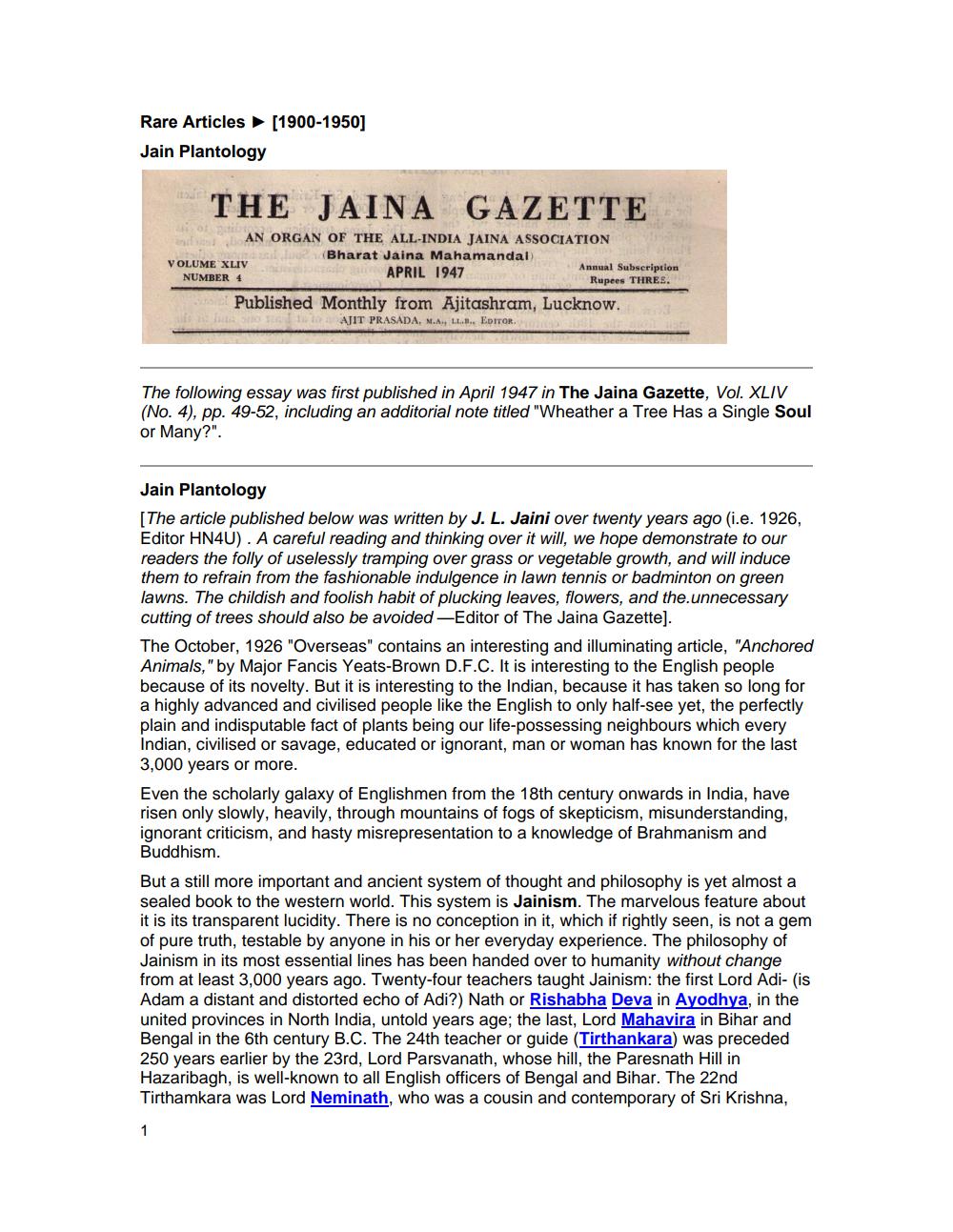________________
Rare Articles (1900-1950] Jain Plantology
THE JAINA GAZETTE
AN ORGAN OF THE ALL-INDIA JAINA ASSOCIATION
(Bharat Jaina Mahamandal VOLUME XLIV
APRIL 1947
Annual Subscription NUMBER 4
Rupees THREE. Published Monthly from Ajitashram, Lucknow.
AJIT PRASADA, M.A., LL... EDITOR
The following essay was first published in April 1947 in The Jaina Gazette. Vol. XLIV (No. 4), pp. 49-52, including an additorial note titled "Wheather a Tree Has a Single Soul or Many?".
Jain Plantology [The article published below was written by J. L. Jaini over twenty years ago (i.e. 1926, Editor HN4U). A careful reading and thinking over it will, we hope demonstrate to our readers the folly of uselessly tramping over grass or vegetable growth, and will induce them to refrain from the fashionable indulgence in lawn tennis or badminton on green lawns. The childish and foolish habit of plucking leaves, flowers, and the.unnecessary cutting of trees should also be avoided-Editor of The Jaina Gazette). The October, 1926 "Overseas" contains an interesting and illuminating article, "Anchored Animals," by Major Fancis Yeats-Brown D.F.C. It is interesting to the English people because of its novelty. But it is interesting to the Indian, because it has taken so long for a highly advanced and civilised people like the English to only half-see yet, the perfectly plain and indisputable fact of plants being our life-possessing neighbours which every Indian, civilised or savage, educated or ignorant, man or woman has known for the last 3,000 years or more. Even the scholarly galaxy of Englishmen from the 18th century onwards in India, have risen only slowly, heavily, through mountains of fogs of skepticism, misunderstanding, ignorant criticism, and hasty misrepresentation to a knowledge of Brahmanism and Buddhism. But a still more important and ancient system of thought and philosophy is yet almost a sealed book to the western world. This system is Jainism. The marvelous feature about it is its transparent lucidity. There is no conception in it, which if rightly seen, is not a gem of pure truth, testable by anyone in his or her everyday experience. The philosophy of Jainism in its most essential lines has been handed over to humanity without change from at least 3,000 years ago. Twenty-four teachers taught Jainism: the first Lord Adi- (is Adam a distant and distorted echo of Adi?) Nath or Rishabha Deva in Ayodhya, in the united provinces in North India, untold years age; the last, Lord Mahavira in Bihar and Bengal in the 6th century B.C. The 24th teacher or guide (Tirthankara) was preceded 250 years earlier by the 23rd, Lord Parsvanath, whose hill, the Paresnath Hill in Hazaribagh, is well-known to all English officers of Bengal and Bihar. The 22nd Tirthamkara was Lord Neminath, who was a cousin and contemporary of Sri Krishna,




